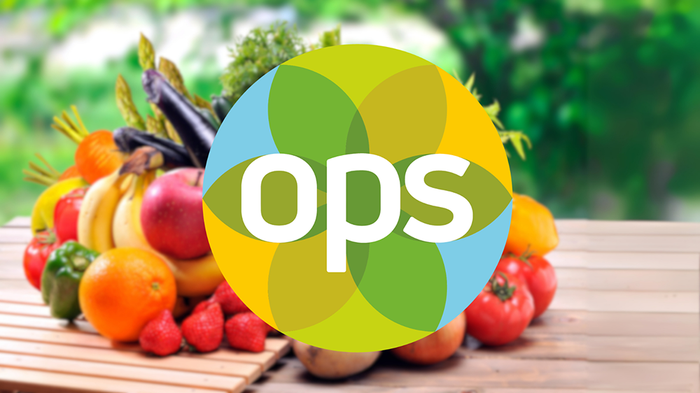OPS panel decodes the “NASCAR-ing” of produce packaging
Shoppers can become confused when packages include an excessive number of labels and certifications. See what these experts suggest.
.png?width=1280&auto=webp&quality=95&format=jpg&disable=upscale)
At a Glance
- Cluttering a package with too many labels makes it difficult for consumers to identify a product’s unique features.
- Organic brands can simplify messaging if they emphasize standards such as USDA Organic and Fair Trade Certified.
- Brand identity shouldn’t rely on certifications. Clearly communicate values through a narrative consumers connect with.
The one-two punch of increasingly rigorous organic standards and more competition from organic-adjacent label messaging means retailers, growers and marketers must adopt new strategies to communicate the value of organic produce.
“We’re confusing the consumer more than inspiring the consumer,” said Kim Chackal, co-owner and vice president of sales and marketing at Equifruit, a Fair Trade Certified banana company.
Chackal spoke alongside Joe Merenda, CEO of organic specialty salad producer Misionero, and Michael LaKier, IGA Brands’ vice president of brand development, at the Cracking the Code: Label Messaging at Retail education session at last month’s Organic Produce Summit in Monterey, California. Mary Heslep, senior vice president of food for Ten Acre Marketing, moderated the session.
The panel was unanimous: Current label messaging practices are confusing the consumer.
Prioritizing label messaging
While the panel agreed organic labeling needs improvement, there was debate between Chackal and Merenda about the certification that delivers the most return on investment.
Equifruit’s program chose to highlight its Fair Trade International certification, considering it the “gold standard” for its rigorous standards and emphasis on working conditions for growers, Chackal said. She also found being Fair Trade-certified can “fast-track” other certifications and new concepts in food sustainability.
Misionero is audited and measured on sustainability, but Merenda stopped short of declaring one certification the most important.
“Every retailer has a different thing that is important to them,” he said. “As an industry, we need to establish, ‘This is what we do and this is why it’s important.’”
Merenda advocated for more awareness of the USDA Organic label first, as claims like Controlled Environment Agriculture (CEA) are “hitting a note” with customers while “dancing around” USDA Organic certification.
“What is the next phase in organic branding and the USDA logo for us to continue to see growth in the category and not rest on our laurels?” Merenda said. “Does the average consumer know we strengthened the standards?”
Merenda shared from an organic grower’s perspective, as the organic salad category is experiencing unprecedented “flatness.” He expressed frustration at the rigor of organic standards getting lost in translation.
“Right now, we are doing a tremendous amount of work that has no value in the consumer’s eye whatsoever. We do it because it’s the minimum standard of doing business,” Merenda said. “We are spending a fortune on [achieving organic certification]. Now, how do we put it together in a way that is meaningful and inspires the consumer?”
.png?width=700&auto=webp&quality=80&disable=upscale)
How to choose certifications, labels
The panel warned against the “NASCAR-ing” of packaging, as Heslep pointed out her in-flight snack boasted a list of certifications, including everything from being a woman-owned company to being Rainforest Alliance Certified.
“It felt like a lot of claims for one little crisp I was being handed on an airplane,” Heslep said.
However, some organic produce, including private label brands, opt for the current minimalist trend that displays little more than the commodity’s name and the USDA organic symbol. Heslep advised the sweet spot is somewhere in the middle, suggesting a maximum of three certifications on a package.
She said, “46% of consumers are searching for labels on their packaging to make purchasing decisions. [But] if you have too many claims on a package it becomes wallpaper.”
LaKier agreed. “You can never over communicate anything, but you can over communicate when you try to do everything at one time.”
LaKier, who oversees brand development for the largest global network of independently owned grocery stores, emphasized zeroing in on the “point of inspiration” for a consumer.
“Understand your brand, your category and what’s important to the shopper as opposed to putting labels on everything and confusing the heck out of everybody,” LaKier said.
Optimizing QR codes
The panel discussed opportunities within QR codes, now ubiquitous in post-pandemic marketing. Everyone agreed these codes provide a chance for brands to expand a package’s limited real estate and develop content that tells the story behind or beyond a certification label.
Chackal shared Equifruit’s experience with QR codes, choosing to route consumers to their attention-grabbing, pop culture-centric and banana-filled Instagram account.
“Instagram is more effective than redirecting to our website,” Chackal said. “We know you’re not going to do that in the milk aisle.”
Fresh social media strategies and emerging certifications that attract mindful consumers can feel like gimmicks if the company does not understand the core of its business, Chackal advised. Claims on packaging should feel like a commodity’s “supporting cast,” she said.
“Build out a strategy of defining who you are and communicating that to your consumer,” said Chackal. “We can’t just rely on certifications to do the work for us. We need to get more innovative in the way that we message the foundations of our brand, what’s important to us and what has built the values of our business.”



